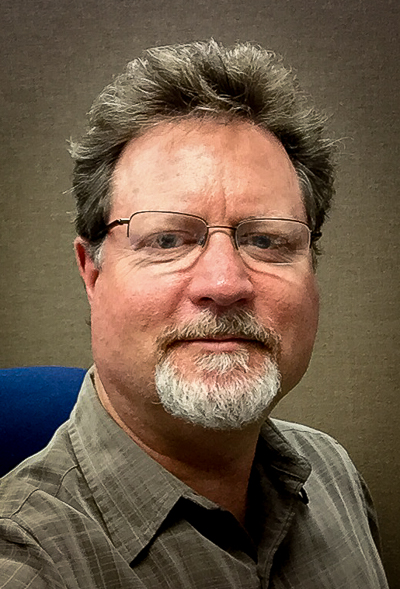Storm Center > Entergy Puts Practice Into Play During Hurricane Season (T&D World Magazine)
Entergy Puts Practice Into Play During Hurricane Season (T&D World Magazine)
09/30/2021

The utility recalls the historically destructive 2020 hurricane season while forecasters predict volatile storms ahead for U.S. coastlines
The COVID-19 pandemic, an economic shutdown and political turmoil: Could things have been much worse in late summer 2020? Yes, it turns out they could be and were, especially for electric utilities with operations across the U.S. Gulf Coast and their customers. A series of destructive storms hit the coastline.
On Aug. 27, Hurricane Laura slammed Louisiana with a ferocity not seen since 1856, decimating T&D equipment and even damaging some generation units. More than 900,000 Entergy Corporation customers were left in the dark, some for as long as 35 days. Just weeks after Entergy completed restoration work from Hurricane Laura, Hurricane Delta lashed many of the same areas of Louisiana, Mississippi and Texas as a Category 2 hurricane, causing yet another round of widespread power outages. Then, on the heels of Hurricane Delta, came Hurricane Zeta, which delivered destructive high winds and heavy rains across a wide swath of Louisiana, Mississippi, Florida, Alabama, Georgia, the Carolinas and Virginia.
Destructive storms like these are an unfortunate but not unexpected part of living on the coast of the Gulf of Mexico. They hit harder in some years ― as in 2020 ― than others. The Colorado State University Tropical Weather & Climate Research team released a report April 7, 2021, stating the chance of a major landfall on any part of the U.S. coastline is 69% in 2021, compared to an average of 52% over the last century. CSU predicts 17 named storms will occur during the Atlantic hurricane season, which runs from June 1 to Nov. 30. By comparison, 30 named storms occurred in 2020, and an average season sees 12 storms.
Having been in business for 108 years, Entergy is no stranger to major storms. Headquartered in New Orleans, Louisiana, the utility survived Hurricane Katrina in 2005 as well as hundreds of violent storms before and after it. However, the 2020 season ― Hurricane Laura, in particular ― was legendary. Thanks to a well-rehearsed plan, the utility was up for the challenge.
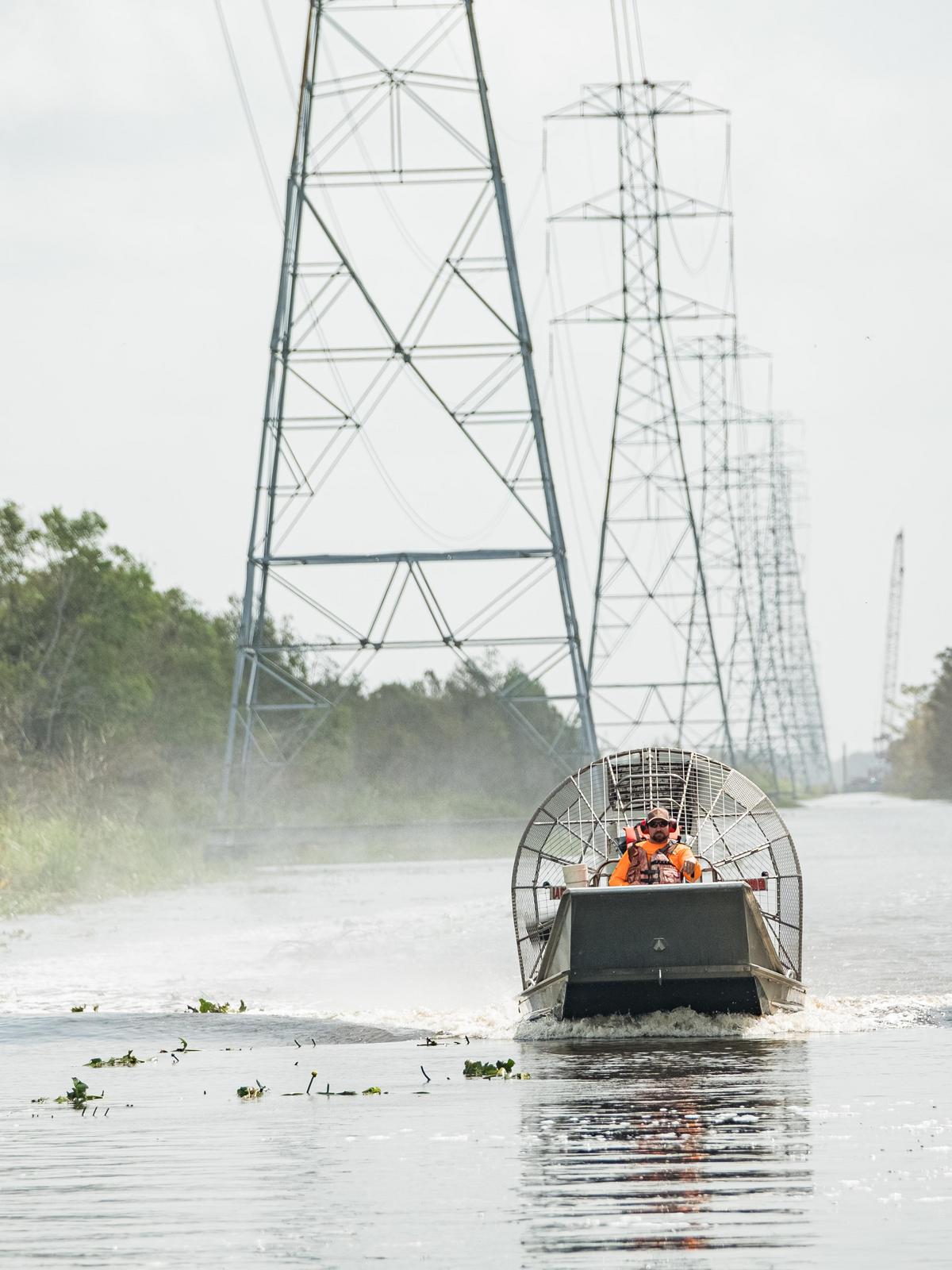
Linemen access damaged transmission structures in a swampy area near Orange, Texas, in a fan boat. |
Facing Down Hurricane Laura
Entergy lives by the adage: Prepare for the worst but hope for the best.
As Hurricane Laura gained strength over the warm waters of the Gulf in late August 2020, it became increasingly apparent to the utility’s emergency response planners this hurricane would be like the worst-case scenarios they plan for and run through during storm drills. The atmosphere was still settling from the recent Hurricane Marco when Hurricane Laura approached, making storm intensity and path predictions particularly difficult. With every mile Laura traveled across the warm waters of the Gulf of Mexico, the forecast for Louisiana and Texas became more ominous.
Entergy’s well-rehearsed storm plan calls for placing workers, equipment and materials close enough to the expected destruction to respond quickly, but far enough away to avoid damage themselves while they ride out the storm safely. As outside help from mutual-assistance partners and contractors were preparing for aid, the nearly 3000 Entergy employees in the path of the storm implemented their personal emergency plans and prepared to respond once the storm cleared and it was safe to do so.
Hurricane Laura exceeded expectations as it made landfall at Cameron, Louisiana, as a high-end Category 4 hurricane, packing sustained winds of 150 mph (241 kmph). In Laura’s wake would be the destruction of nearly 14,000 distribution poles and more than 1,900 transmission structures. Four Entergy power plants were damaged, as well.
The region of southwest Louisiana in and around Lake Charles took the brunt of the storm’s force while southeast Texas, served by Entergy Texas, sustained extensive damage that caused 120,000 customer outages. Because of the storm’s historic intensity, it continued through northern Louisiana and stubbornly held on as a tropical storm deep into Arkansas. As a result, a day after Laura made landfall, nearly 48,000 Entergy Arkansas customers also lost power.

Even as Hurricane Laura was traveling across Louisiana, the Midcontinent Independent System Operator, Entergy’s reliability coordinator, directed the utility to shed load in portions of Texas that were not affected by the storm. “Shedding load in the western regions of our system protected the stability of the bulk electric system and helped prevent further widespread outages,” explained Jim Schott, vice president of transmission for Entergy.
The most immediate challenge was the storm had taken out all nine transmission ties to Entergy Texas. This left southwest Louisiana completely isolated from the grid. “This is not a restoration,” said Entergy Louisiana President and CEO Phillip May at the time. “It’s almost a complete rebuild of our transmission and distribution system that serves Calcasieu and Cameron parishes.”
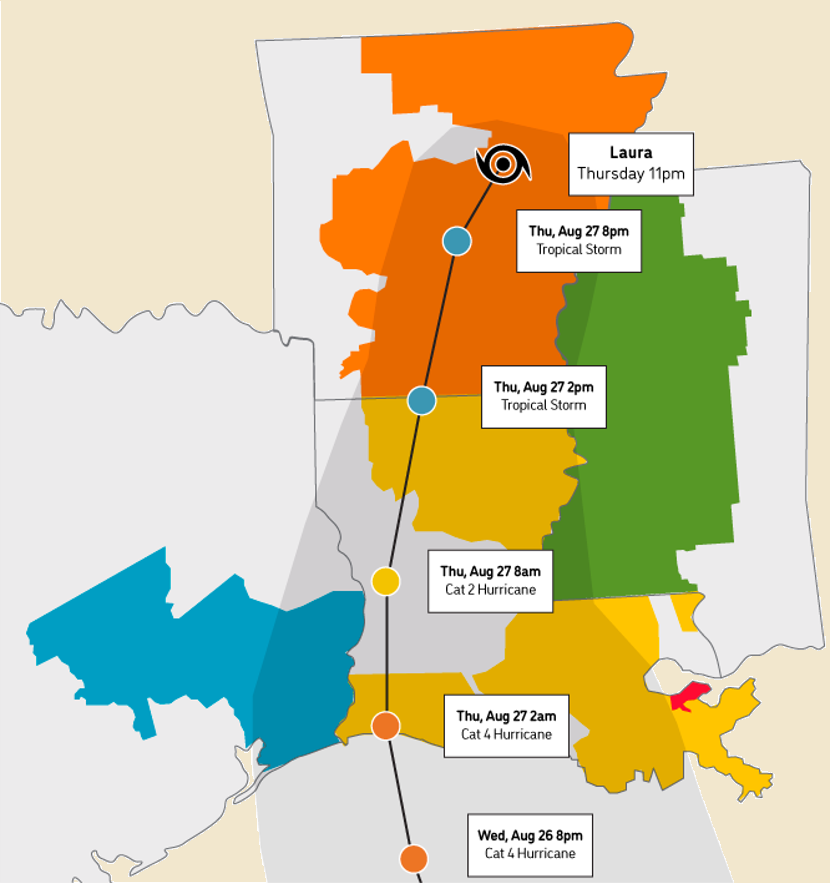
Hurricane Laura’s historic intensity caused sever damage to the Entergy distribution and transmission systems resulting in nearly 616,000 outages at its peak and impacting more than 919,000 customers in total. |
Making Electricity
With the transmission lines into Lake Charles unable to bring in power from outside and the five local generating units out of service, Entergy engineers faced two interesting dilemmas: they needed power to make power and, once the utility started making power, customers needed to be ready to receive it.
As the winds calmed, restoration crews poured into the region and began rebuilding the T&D systems. Damage was so severe it would be well into September 2020 before any of the transmission feeds into Lake Charles were returned to service. The Calcasieu power plant is about 9 miles (15 km) southwest of Lake Charles. It was out of service but had suffered only minor damage, so getting it on-line was a priority.
An early major decision was whether to black start the Calcasieu plant, firing up portable diesel generators first to provide power to the fans, pumps and other systems in the station so, in turn, the plant could generate power to send to the grid. Entergy has power plants equipped for black starts, but the Calcasieu plant is not one of them. Nevertheless, its capability and available ties to transmission made it the quickest solution to return power to the region.
Black starting the Calcasieu plant introduced multiple complications. While the plant did not have its own backup generators, Entergy had some on order for use to power up pockets of the city or black start a power plant, or both. So, backup generation was on the way, but it was not there yet. Further, because the Calcasieu plant was not designed to be started with portable backup power, a lot of modifications would have to be made on the fly, with each modification carrying the risk of introducing a failure, explained Charles Long, Entergy’s vice president of transmission planning and strategy.
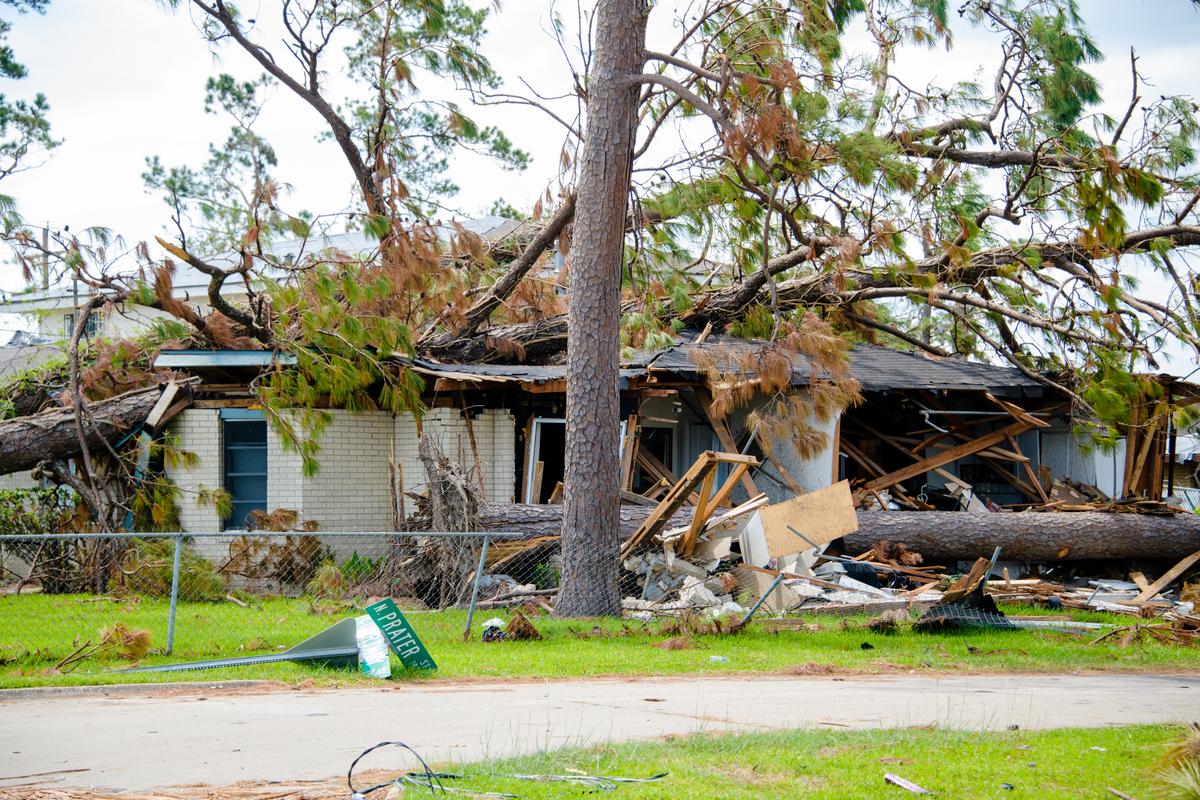
For some customers, a loss of electricity was only one of many problems they were facing. This home in Lake Charles was destroyed when Hurricane Laura blew a pine tree onto it.
A less risky but still precarious option was to wait for a transmission line from neighboring utility Cleco Power to be rebuilt and restored to service, and then rely on that electricity to power the systems in Entergy’s generating plant. Cleco’s transmission lines had been ravaged by the storm, as well. “In an early discussion with Terry Whitmore, vice president of transmission services for Cleco, Entergy and Cleco restoration planning teams had agreed not to depend on each other any time soon due to the extreme damage to both systems,” Long recalled.

|
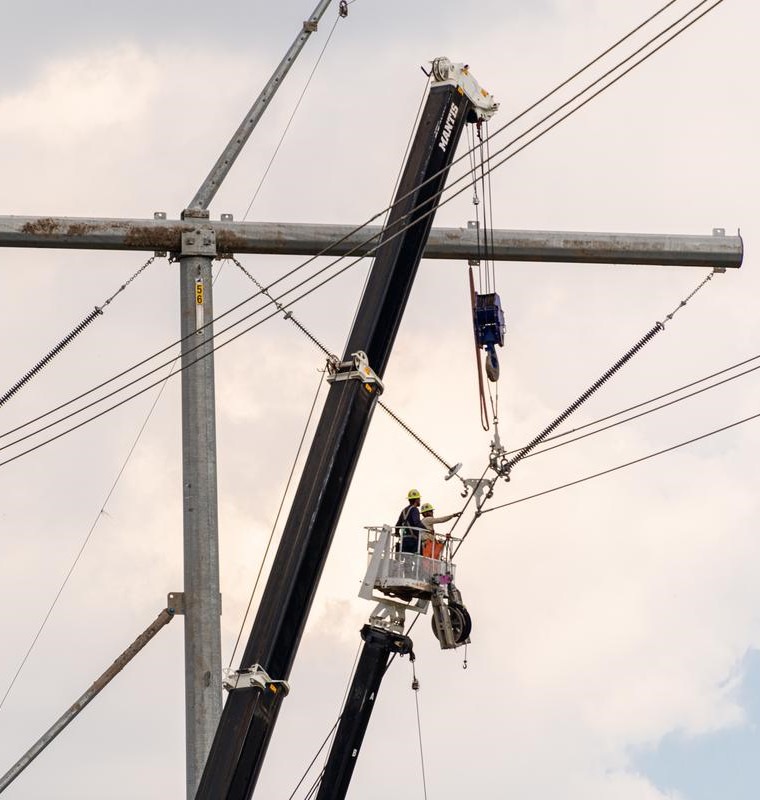
|
As restoration work progressed, Whitmore kept inching in on the restoration date of the Cleco line until an in-service date of Sept. 8 appeared more and more doable.
“So, we’re at this point where we’re getting the plant prepared so that it will be able to black start, and we’ve done some preliminary tests and things are checking out,” Long said. “Meanwhile, Cleco’s return-to-service estimation on that line kept getting better and better.”
It came down to either black starting the Calcasieu plant on Sept. 7 or starting with the Cleco power on Sept. 8.
In any major restoration, getting the power back on safely and as quickly as possible is what drives every decision when Entergy leaders develop strategy for what actions to take next. “In the end, the risks associated with black starting the plant just weren’t worth the reward of shaving off a few hours, so we went with the normal operations afforded by the Cleco line,” Long recalled.
Late in the evening on Sept. 8, the Cleco tie was closed and allowed to serve just a portion of one distribution feeder in Lake Charles.

Receiving Electricity
Getting the Calcasieu plant into a state where it could begin energizing the region in and around the city of Lake Charles was “just the beginning of the story,” Long explained.
Normally, the plant would place power on the grid and thousands of customers would consume it as it is produced. However, the grid was down and there were few customers ready to receive the power, either because of damage to their property or to the distribution lines that deliver the power.
“With just one transmission line coming in, you have to operate the plant as if it is an island,” Long said. “You have to balance supply and demand all the time to stay in balance. If you don’t, things trip and you have to start over.”
Since the amount of demand at the time was largely unknown, the trick would be to start small and work up from there until, eventually, reconnecting to the larger grid and turning control back over to MISO. The challenge was the Calcasieu plant is a combustion turbine capable of producing more than 150 MW of power. Emergency minimum output from that plant is about 20 MW. Anything less than that and the plant will trip off-line. For a town that had been without power for 13 days, the biggest challenge was finding customers who could accept at least 20 MW of power, to avoid exporting any power onto Cleco’s damaged system.
On the morning of Sept. 9, the Calcasieu plant began slowly feeding power into Lake Charles and delivering it to a few customers at first and then a few more over the next several days. The plant continued to operate as if it were in an island, “but we had the security blanket of that one line to help absorb small imbalances in load and generation,” Long said.
Part of the success of the re-energization of Lake Charles was teamwork with customers. It was important to know which of them would be drawing how much power and when. Up to that point, the Lake Charles load was only for commercial and residential customers.
Then, the utility brought a second plant, the Lake Charles power station, back on-line, which made it possible to begin adding some of the many high-demand industrial customers in the area. “Some of them were like, ‘Yeah, we’re ready to go,’ then they weren’t. And some were like, ‘We’re not ready to go, then they were.’ We were trying to just get enough flow to be stable,” Long recalled.
Entergy’s industrial account executives were working one-on-one with petroleum refineries, chemical manufacturers, major pipelines, liquefied natural gas exporters and other large-load customers that make up the enormous industrial complex that spans the Gulf Coast region.
As restoration continued, additional transmission lines into Lake Charles were restored, along with the distribution lines to deliver the power they carried. “Once we got three transmission lines energized, we started feeling more confident that we could lose one and not lose control while managing the interchange between Lake Charles and the outside world,” Long said.
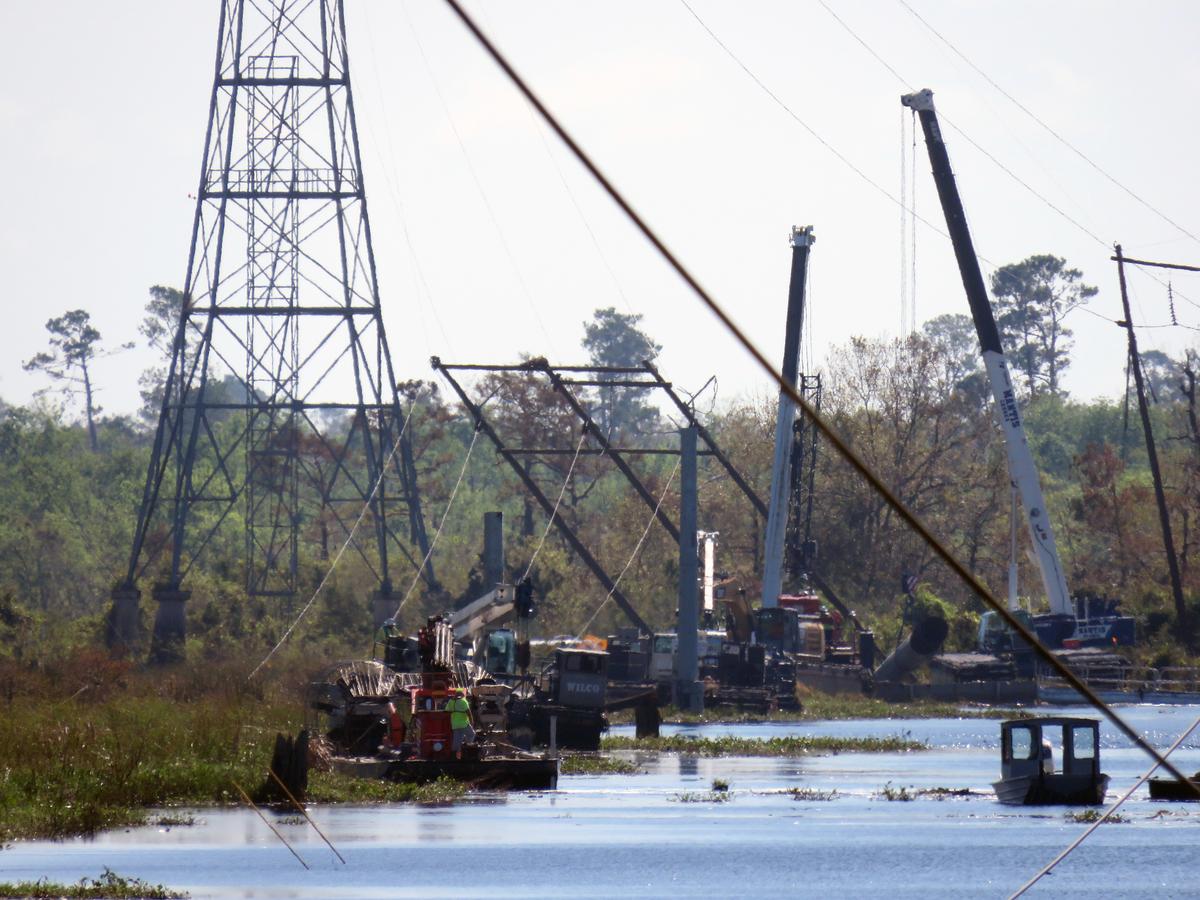
Maintaining Load Balance
All this was still without the dispatching and load control normally provided by MISO. “Our transmission control center staff was in storm mode 24/7 during this restoration. It became their job to carefully watch their screens and remotely but manually dial the generators’ output up and down, much like we did it 100 years ago,” Long noted.
In addition, the Entergy load-balancing authority group within Entergy’s system planning organization worked closely with the transmission control center to keep things on an even keel until MISO was able get involved. Keeping the load balanced was a constant, tedious challenge. “You’re trying to wait until you get enough load so that you never drop below the minimum of whatever generators you’ve got on, but you want room to grow so you can add generation to get things closer and closer to normal,” Long said.
Eventually, structure by structure, line by line and substation by substation, the Entergy T&D system was rebuilt and reenergized. Entergy employees, mutual-assistance workers and contractors made up the largest workforce mobilization in the utility’s history. A team of at least 26,000 men and women from 31 states, the District of Columbia, and Canada restored service after one week to 80% of those who had lost power, 86% after two weeks and 94% after three weeks. By the end of week four, 99% of customers were back on-line.
Practice Makes A Difference
While getting the lights back on is the objective that gets the most public attention, the most important measure for Entergy employees and contractors is their health and safety. “We always want folks to go back home in the same good health in which they arrived and that includes our pandemic protocols, too,” said Eliecer Viamontes, vice president of utility distribution operations. “We never stop looking for ways to improve our processes, procedures, equipment and, most importantly, our mindset to make this dangerous work safer for those who bravely do it.”
Through it all, the Entergy team had a well-practiced plan, worked the plan, and came out stronger and more experienced after Hurricane Laura. The utility will continue to build on this experience in upcoming hurricane seasons. TDW
DAVID LEWIS is a senior communications specialist with Entergy Corporation. This article was originally published in the July 2021 issue of T&D World magazine.

